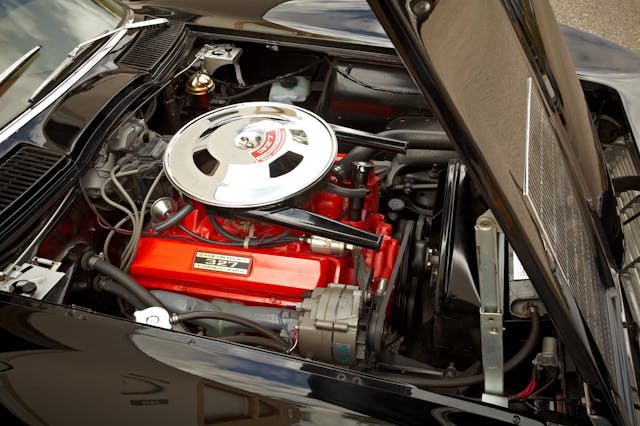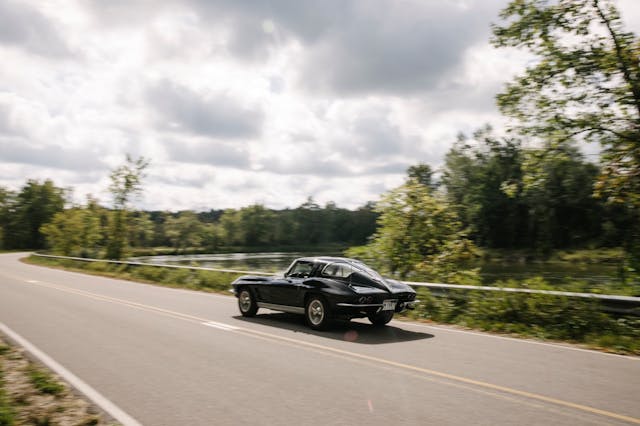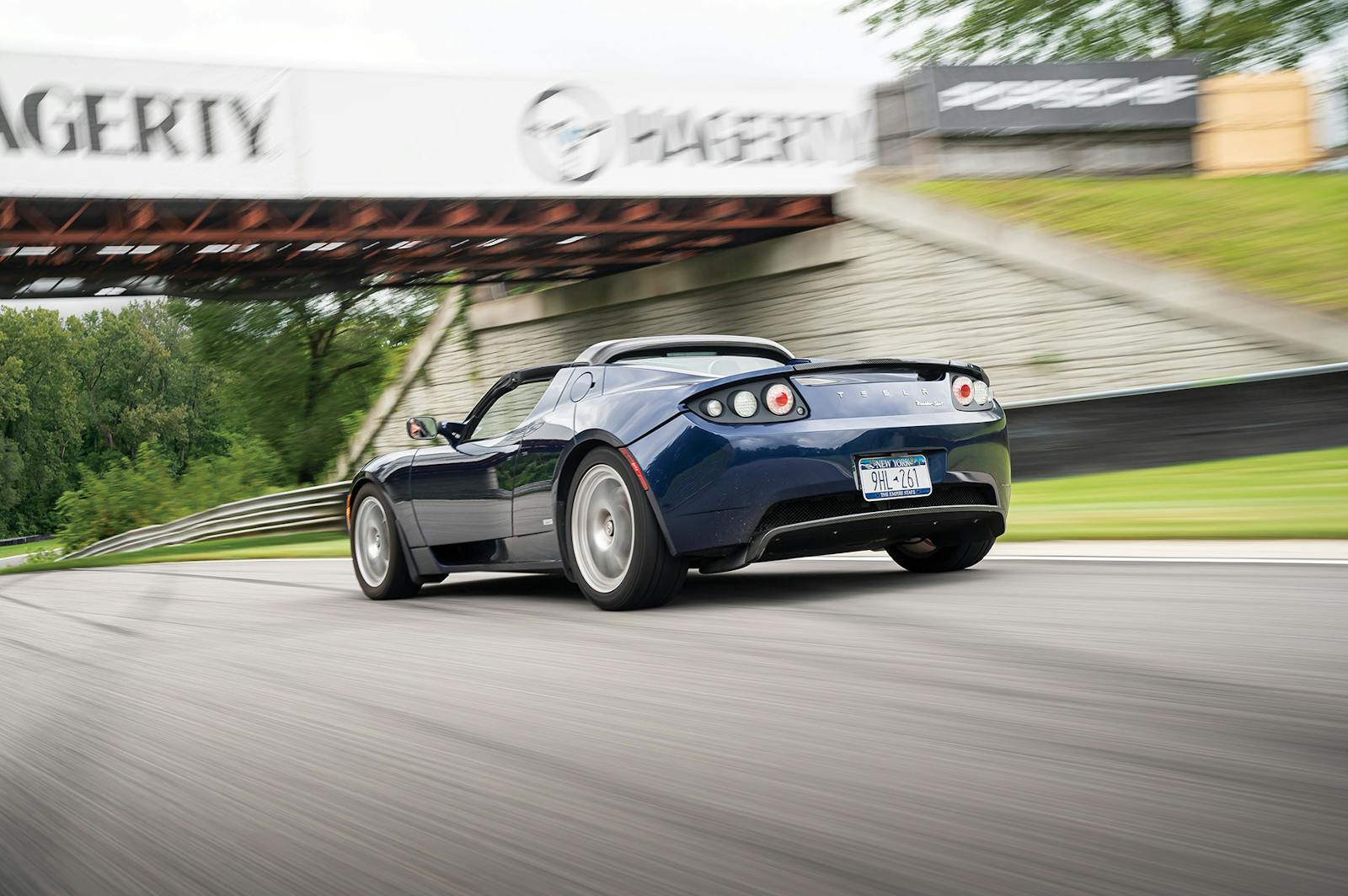Is a low-mile, numbers-matching classic actually what you want?

“I’m searching for a low-miles collector car, and it has to have an original, numbers-matching motor.” So says nearly everyone when looking for their next classic car. But why?
Part of it is undoubtedly groupthink. We have aged into this hobby believing that these are the best cars. But is that true?
In the case of low miles, it ain’t necessarily so. A 20-year-old car showing 2500 original miles, be it a Ferrari, Porsche, or Honda, is a collector’s dream come true, right? Well, possibly—it depends how long the car has sat without attention. If it’s been a while, “waking up” that car might be a complicated (read: expensive) undertaking. The tires have aged out. The fuel tank might be filled with a smelly gelatinous version of gasoline. And any internal-combustion engine, sitting without the benefit of lubrication, will likely need serious attention.
Maybe those 2500 miles were collected at a rate of about 100 per year. Are the belts and hoses the original, aged-cracked rubber ones? Was the exhaust system ever warmed up enough to heat and vaporize the moisture trapped inside, or is the system now full of rust?
Let’s look at it from another angle. Is it worth it to you to pay a 30, 40, or 50 percent premium to get a 2500-mile car over a 25,000-mile example? This is a question only you can answer, but it’s something worth thinking hard about, especially if your plan is to drive the car instead of placing it in bubble wrap for most of your life. In doing the math for most cars, putting an additional 25,000 miles on a car that already has 25,000 miles on it will cost much less in depreciation than starting with a 2500-miler and adding your own 25,000 miles.

On the note of “numbers matching,” almost no one knows what that term actually means. That’s because it is interpreted many different ways by many different people. In the very broadest of broad strokes, one could reasonably interpret “numbers-matching” as a car with all the original parts that contained serial-style numbers, which were placed on the vehicle when manufactured. Now, does that mean if one tire was replaced after a blowout, the car is no longer numbers-matching? Tires have numbers, right? You might think I’m exaggerating, but we’ve all seen an ad that details “originality” to an extreme.
Newsflash: Before “matching numbers” was a thing, when your engine blew up under warranty, you actually wanted a new one, not some rebuild done by the guys in the shop. But somewhere along the line people started believing their cars were as pure as the driven snow—that surely Zora, Enzo, Henry, or Butzi had built the thing themselves.
I had a client 20 years ago ask for advice on buying a C2 Corvette. Among his must-haves was matching numbers, which he interpreted as the serial number of the engine matching that of the chassis. His intent was to have fun with the car, to drive it, to wrench on it, and to bond over it with his preteen son (who loved Corvettes). Eventually, he said, he wanted to give his son the car, possibly as a college graduation present.
He was stretching his budget to find the right example, so I pointed he could get a car with a replacement engine (in Corvette-speak known as a NOM, for non-original motor) for perhaps $15,000 less. Intrigued, he did the math. He wasn’t buying the car as an investment; he was buying for fun. He didn’t care about ever showing it or having it judged. So he bought a great car that was everything he and his son wanted. The NOM was a later crate motor that proved to be a reliable powerplant from day one. Today, his son enjoys the car every bit as much, perhaps even more, than if it had come with the original motor.

If you’re shopping for a car to drive and enjoy—which I suppose most of us actually do—buying against the grain can save money in the long run. If you can afford the best, with low miles and matching numbers, feel free. I’m just saying that often there is no reason to eliminate a “lesser” car with higher miles or a replacement engine. The old-timers will tell you that someone else worked out the bugs for you.
I’m not here to tell you how to spend your money. But I am here to give you complete permission to buy what YOU want, not what your friends want. Besides, unless you’re selling, no one has to know.
***
Want a better understanding of what’s driving collector car values? Sign up for the Hagerty Insider newsletter.


Hear, hear! Unless you are buying on a purely speculation basis – to try and turn a profit – I can’t see little value in “numbers matching”.
There is a whole world of collectors out there who buy collector cars, polish them up, and put them in their checker-board floored ‘garage’ to ooo and ahh at, and the most miles they ever see is getting loaded up to go to the auction and off to the next checker-board floored garage. These are the folks in my mind who are most concerned about numbers-matching cars. My (350 by the VIN) 454 Corvette provides loads of guilt-free driving fun
I agree on the problems that low mileage can create. I am a love ’em and leave ’em car owner EXCEPT for a 1981 Fiat 2000 Spider which I bought new for my wife’s 31st birthday. It only has 24,000 miles on it due to a decade or two of sitting, always in a garage and stored properly, but it has sat as much as it has been driven. It runs and drives fine now, but sitting is hard on a car. Just ask my wallet!
Numbers matching and other “originality” all depend on what you want and intentions for the car. I’m not someone who collects as an investment. However, I prefer numbers matching for potential “desirability” and the I like thinking about where the car has been and managed to keep some originality. It’s a story and part of its history.
To branch off a bit into originality I will share the story of my 1971 Cutlass SX convertible. The car was modified into a clone/tribute of a 442. It’s disappointing to know that someone took 1 of 357 cars built and changed it. However, the car is beautiful…and that had more value to me than its originality.
Weigh what you want from the car with what it is…then consider what you want it to be.
Well this is a case of want vs need.
Most of us are just car people who love playing with cars. For us condition is more important than anything. We are not buying for investment. If we were there are much better investments.
Now for the high end collector and museum the number matching and low miles are great as they represent cars as built for the future.
To buy a low mile car and let it sit for me is counter to what I do. But that does not mean that do the other is wrong.
We all just need to pick what is best for us and respect the others. Not everyone wears the same shoe.
Engine blocks can been re-stamped so the “numbers match”, and some are faked well enough to fool people into paying way too much for a car that could have an old truck block in it.
This is true. I have a very original ’30 Model A Tudor. I have a spare engine and by carefully using a set of Ford stamps, the spare engine number now matches the original engine, so if I change engines, the numbers still match. Is this legit? No, but it saves hassles with the DMV.
I am a one-at-time American antique auto owner since I was 15 years old. The low miles and garaged cars were the easiest and least costly to maintain and enjoy. Under 50,000 miles they just need a little upkeep. I prefer “original” condition or perfectly restored to original. I like to observe and experience “how they drove off the dealer lot”. No one asked about engine numbers when I sold a car to fellow collector. They were interested in the log of maintenance and replacement records. The difference must be “investor” mentality versus just an “enthusiast/owner” mentality. 🙂
The most fun you can have with a car is driving it. If it is well taken care of with proper fluid changes, washed, waxed and cleaned on the inside regularly cars made in the last 30 years have more life expectancy than the owners.
I have often driven 12-16 hours at a time and am always amazed that the car has plenty left to give but I am the one who needs to rest.
Buy a well taken care of example and drive it . Don’t buy the low mileage cream puff that you’ll be afraid to park it or run in a National Park with. You’ll only have regret and it will get sold to someone else until finally its purpose is discovered.
My 1970 E-type has only 3000 miles on the clock. Or more precisely 03000. Amazing how everything still wore out on it? Must be the didn’t build them like they used to 😉
Sometimes you just instantly bond with a car, doesn’t matter the condition.
Some of us go to the other extreme and buy high mileage cars. Our 1959 Edsel station wagon just rolled over 330,000 miles. We knew the original owners and the car has many, many memories of times spent with them. We continue their legacy of DRIVING the car, with over 5,000 miles added so far in our two years of ownership. And without ever worrying about adding another paint chip or replacement part while out on the road.
I own a 1969 Corvette convertable with the 427 engine. I ordered it and took possession in July 1969. It happens to be numbers matching, and has been kept in great shape with maintenance and care to the tune of 91700 miles. I have just been lucky that I have had the place and money to keep my car in great shape. The numbers matching will not mean anything to my sons who will eventually own my car. I love my Vette.
Much depends on how the car is driven. Short runs and local driving it tough on a car. It’s been said that a single cold start puts 500 miles’ worth of wear on an engine. One mile of city driving is equal to 10 mile of highway driving. Another factor in owning an ultra low mile car is that every time you drive it you’re chipping away at the value.
When I was a serious collector and compulsive muscle car buyer, and had a car completely restored, I would never drive it. Put it on a trailer to take it to a car show. The only other time it got driven was when it left the garage and the truck driver loaded it onto the car carrier on its way to the new owner.
I thought “What a shame– I’d love to drive that car!”
BUT, the serious profit made allowed me to buy all kinds of other decent, even rare and original, but fun cars to drive and enjoy.
Two examples of many: 1964 Chevy Impala Super Sport maroon black interior dual-quad 409/425 4-speed factory air(yes this car was not available with factory air in the top solid lifter motor, but the dealer pushed a special order through for one of his salesman); 1968 Hurst Olds 442 34,000 original miles (455 and Ram Air set up beautifully by Hurst), what a nice car!
Okay I’m having fun here talking about old cars so I’ll add a third one: 1962 Chrysler 300 hardtop 413 with factory installed manual floor shifter and dealer installed supercharger (yes, Chryslers were not available then with stick shifts but the dealer finally after 9 months got the special order fulfilled from the factory).
Everyone is in the hobby for their own reasons. I just like old VW bugs, and driving them, whether it’s to a show or just to get the moisture in the fluids boiled out. I’ve never bothered with stock authenticity, the latest “Cal Look” (dumb, just dumb), or the occasional paint chip. I want my car to be reliable, look pretty good, drive like I don’t have to baby it, and stand being put away for the winter in Idaho.
But I understand that other people want showroom originality, wild customization, or super hot rods. We’re all friends here, and if we love our rides, that’s what matters.
Aftermarket parts don’t scare me as long as they were done right. Numbers matching is important to a degree. A numbers matching museum piece isn’t my thing as I want to drive it and it is going to need lots of upkeep. But I’m not paying through the roof to get it either.
Hey, I paid too much for an original…unrestored 1963 Studebaker Avanti 18 years ago. Nothing but maintenance since. A little tatty here and there, burns a bit of oil but a good driver. Met lots of great people and if I divide the purchase + the maintenance over the years it comes to about 16/18 hundred$/year. Hey, TV and cell phone cost more than that, and no comparison to hitting 100mph on a stretch of old highway with the 4 bbl. screaming! What will it be worth when I or my kids sell it… ? Who cares.